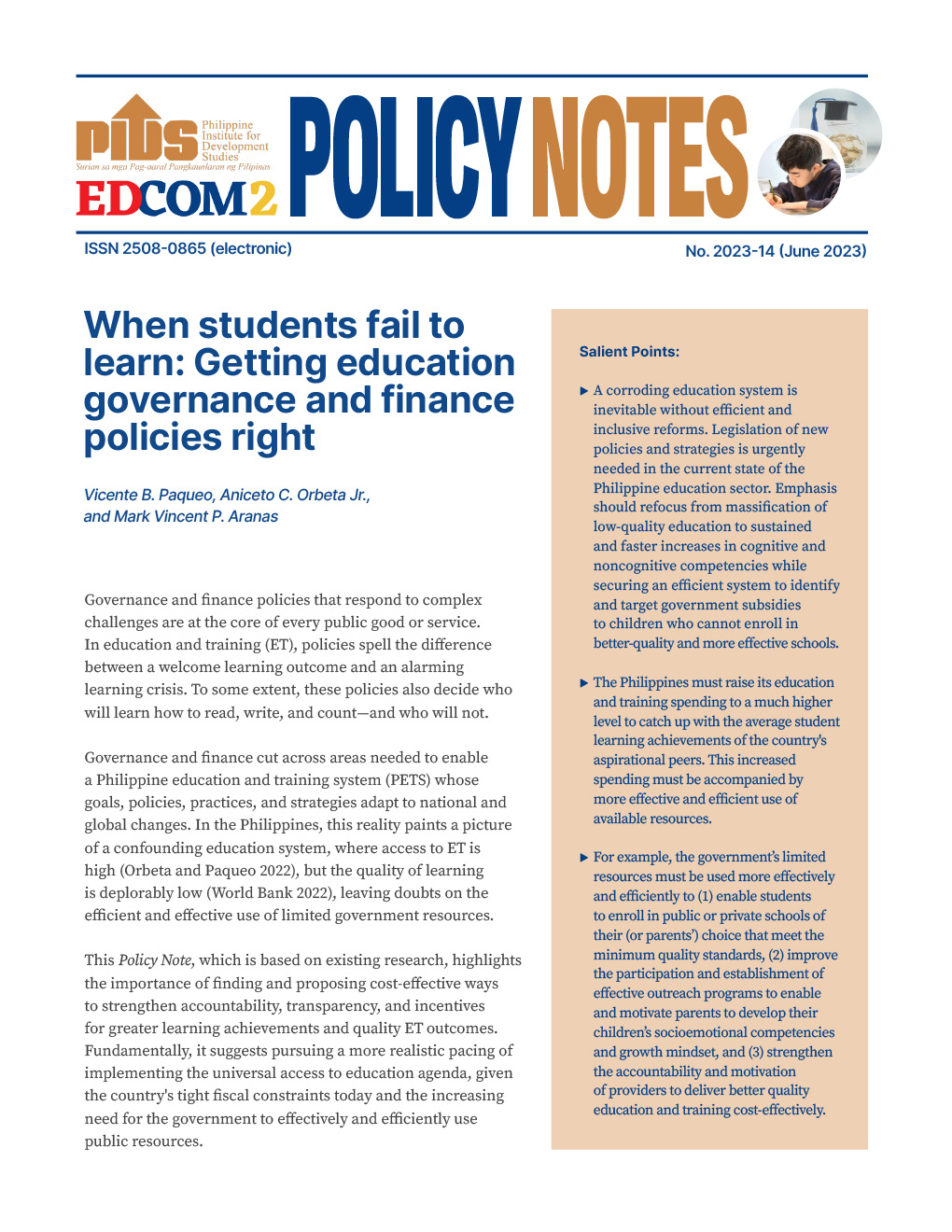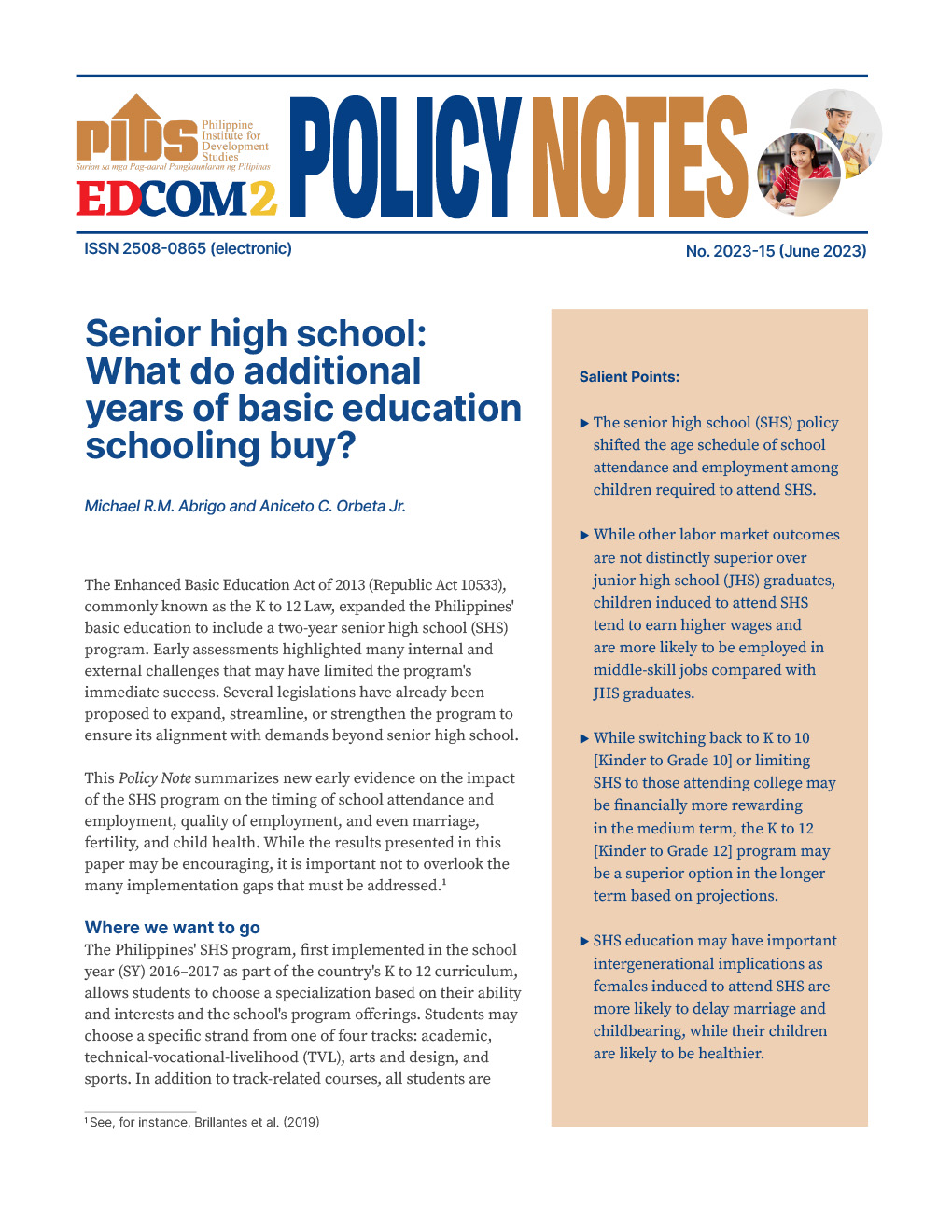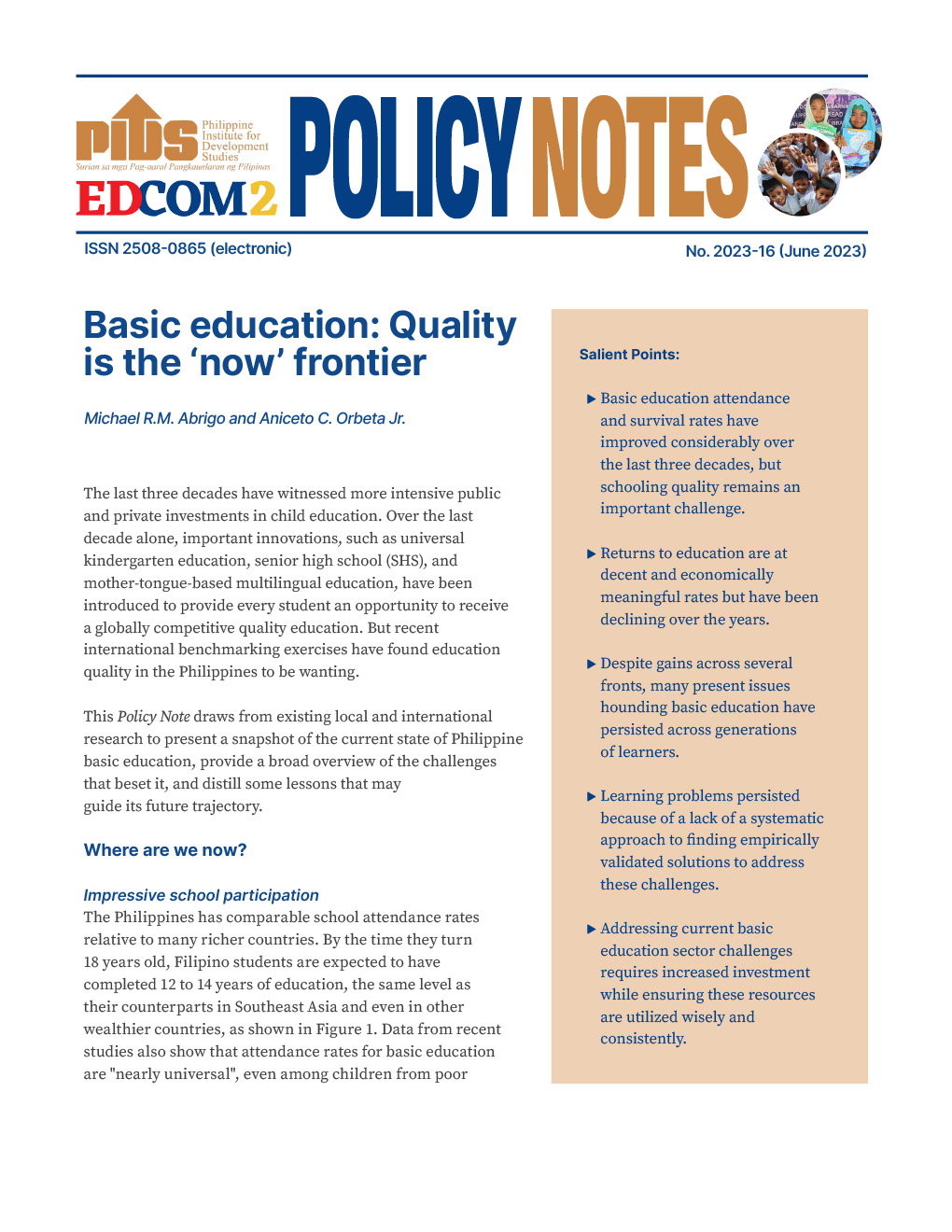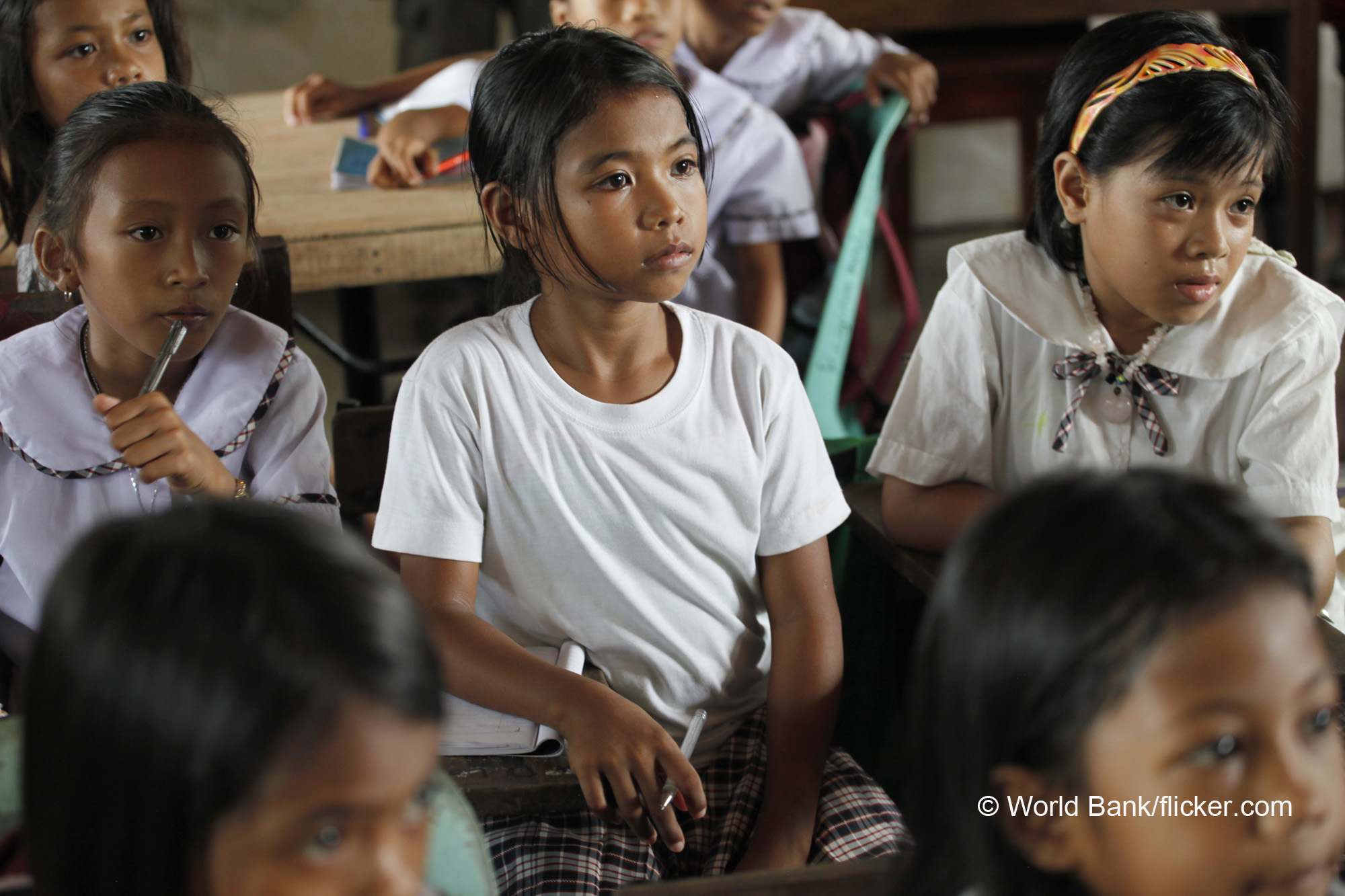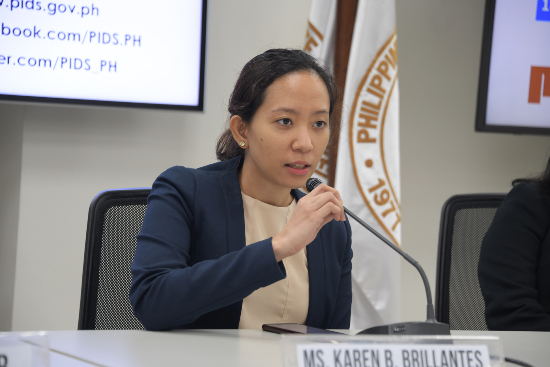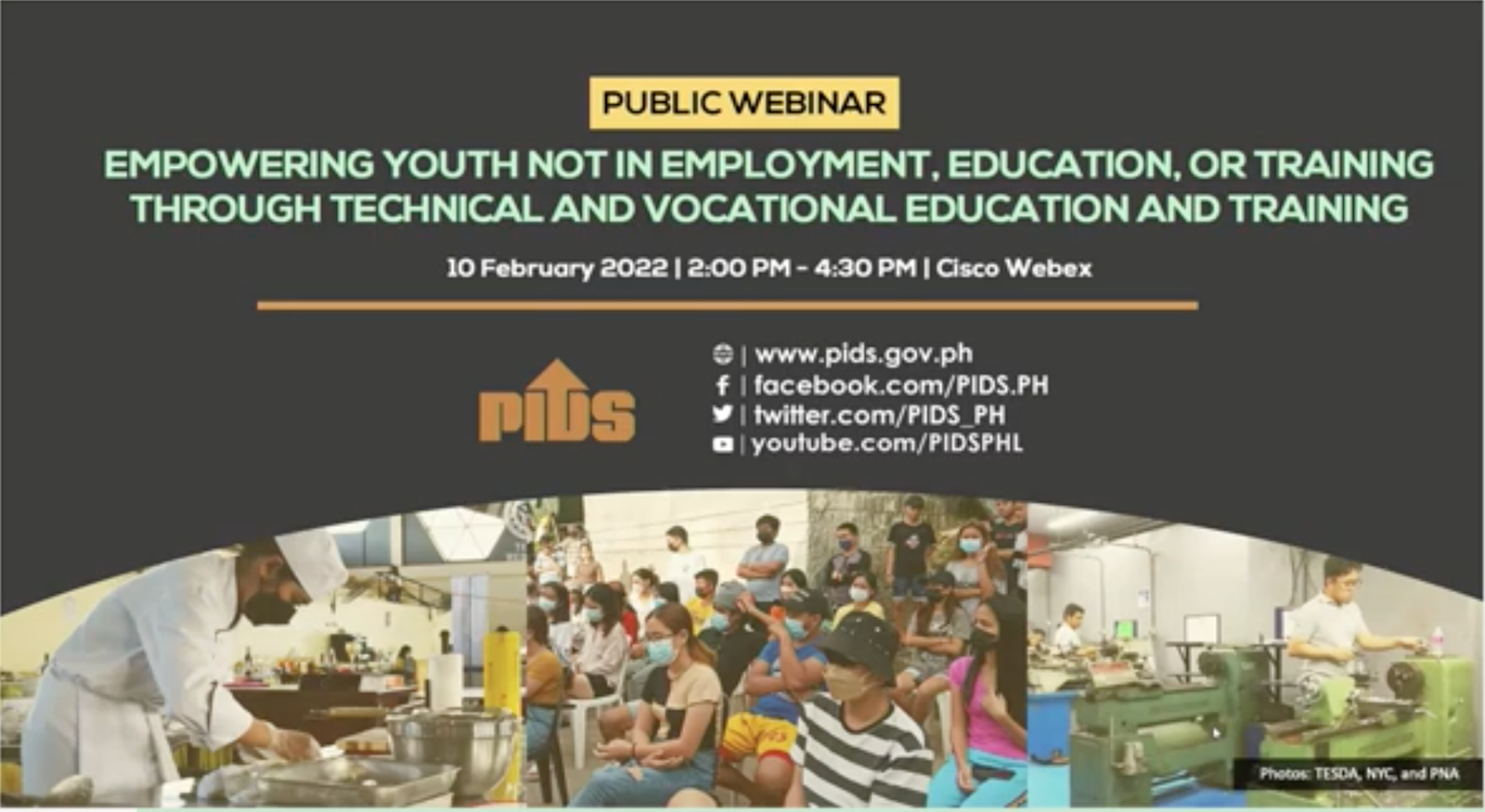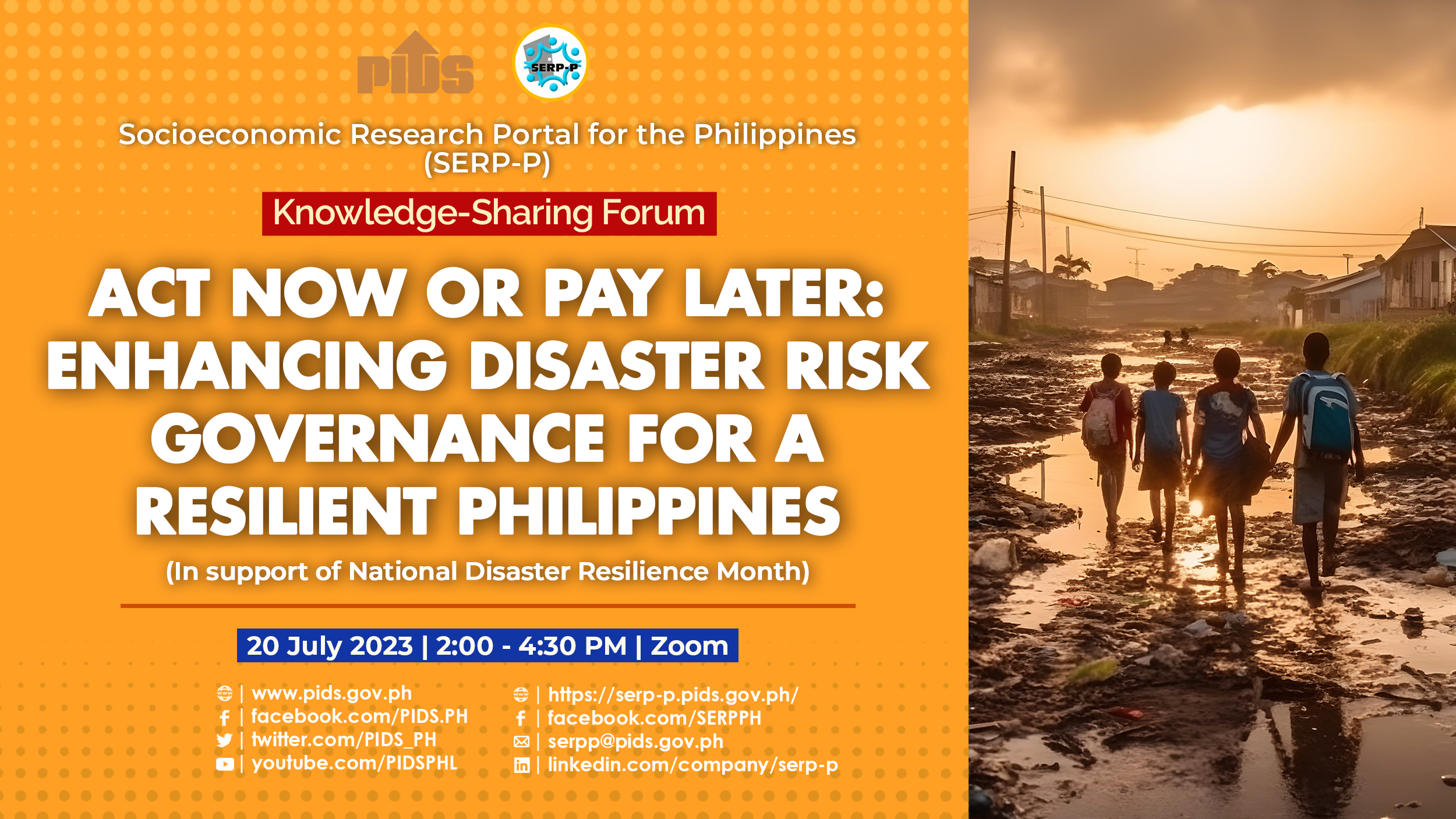The high cost of education is not the top concern for majority of young Filipinos who are out-of-school, as more than half cited “marriage or family matters” as the reason for not attending school, data published by the Philippine Statistics Authority (PSA) showed.
According to the results of the 2016 Annual Poverty Indicators Survey (APIS), 3.8 million or almost 10 percent of the estimated 39 million Filipinos 6 to 24 years old were out-of-school children and youth (OSCY) last year.
OSCY refers to family members 6 to 14 years old who are not attending formal school; and family members 15 to 24 years old who are currently out of school, not gainfully employed, and have not finished college or post-secondary course.
The data showed 42.3 percent of OSCY do not go to school due to marriage or family matters, while the high cost of education or financial concerns only ranked as the second top reason as it accounted for 20.2 percent of those surveyed, followed by lack of personal interest with 19.7 percent
The PSA said marriage or family matters was also the main reason for not attending school for 59.3 percent of females, while 36.5 percent of male respondents cited lack of personal interest.
Nationwide, about 53 percent of OSCYs belong to families whose income fall at the bottom 30 percent based on their per capita income.
The APIS is a nationwide survey conducted by the PSA covering around 11,000 sample households.
Earlier, the Philippine Institute for Development Studies (PIDS) said the Department of Education has to address a number of issues on poverty and health to sustain the increasing number of children in the basic education sector.
Over 22.8 million enrollees are expected to enter public primary and secondary schools for this year’s opening of classes compared to last year’s more than 21.5 million enrollees.<
This increasing trend was already observed by PIDS senior research fellow Jose Ramon Albert, who said in the last 10 years, enrollment in primary and secondary levels has been increasing at an average of one to two percent.
Statistics also revealed an increase in the number of primary and secondary schools in the country despite the backlogs
But while enrollment and school facilities are increasing, some children remain out of school and there are still many cases of drop-outs, Albert noted.
The presumption is that the reason is economic in nature,” he said.
Albert encouraged the current administration to continue the support for basic education, especially for the PantawidPamilyang Pilipino Program (4Ps), the country’s flagship conditional cash transfer program, as this will “improve disparities in education opportunity between boys and girls, and between children from urban and rural areas.
According to the results of the 2016 Annual Poverty Indicators Survey (APIS), 3.8 million or almost 10 percent of the estimated 39 million Filipinos 6 to 24 years old were out-of-school children and youth (OSCY) last year.
OSCY refers to family members 6 to 14 years old who are not attending formal school; and family members 15 to 24 years old who are currently out of school, not gainfully employed, and have not finished college or post-secondary course.
The data showed 42.3 percent of OSCY do not go to school due to marriage or family matters, while the high cost of education or financial concerns only ranked as the second top reason as it accounted for 20.2 percent of those surveyed, followed by lack of personal interest with 19.7 percent
The PSA said marriage or family matters was also the main reason for not attending school for 59.3 percent of females, while 36.5 percent of male respondents cited lack of personal interest.
Nationwide, about 53 percent of OSCYs belong to families whose income fall at the bottom 30 percent based on their per capita income.
The APIS is a nationwide survey conducted by the PSA covering around 11,000 sample households.
Earlier, the Philippine Institute for Development Studies (PIDS) said the Department of Education has to address a number of issues on poverty and health to sustain the increasing number of children in the basic education sector.
Over 22.8 million enrollees are expected to enter public primary and secondary schools for this year’s opening of classes compared to last year’s more than 21.5 million enrollees.<
This increasing trend was already observed by PIDS senior research fellow Jose Ramon Albert, who said in the last 10 years, enrollment in primary and secondary levels has been increasing at an average of one to two percent.
Statistics also revealed an increase in the number of primary and secondary schools in the country despite the backlogs
But while enrollment and school facilities are increasing, some children remain out of school and there are still many cases of drop-outs, Albert noted.
The presumption is that the reason is economic in nature,” he said.
Albert encouraged the current administration to continue the support for basic education, especially for the PantawidPamilyang Pilipino Program (4Ps), the country’s flagship conditional cash transfer program, as this will “improve disparities in education opportunity between boys and girls, and between children from urban and rural areas.

